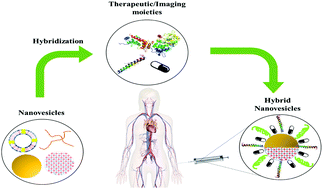Nanomaterials engineering for drug delivery: a hybridization approach
Abstract
The last twenty years have witnessed great advances in biology, medicine, and materials science, leading to the development of various nanoparticle (NP)-mediated drug delivery systems. Innovation in materials science has led the generation of biodegradable, biocompatible, stimuli-responsive, and targeted delivery systems. However, currently available nanotherapeutic technologies are not efficient, which has culminated in the failure of their clinical trials. Despite huge efforts devoted to drug delivery nanotherapeutics, only a small amount of the injected material could reach the desired target. One promising strategy to enhance the efficiency of NP drug delivery is to hybridize multiple materials, where each component could play a critical role in an efficient multipurpose delivery system. This review aims to comprehensively cover different techniques, materials, advantages, and drawbacks of various systems to develop hybrid nano-vesicles for drug delivery. Attention is finally given to the hybridization benefits in overcoming the biological barriers for drug delivery. It is believed that the advent of modern nano-formulations for multifunctional hybrid carriers paves the way for future advances to achieve more efficient drug delivery systems.

- This article is part of the themed collection: Recent Review Articles


 Please wait while we load your content...
Please wait while we load your content...